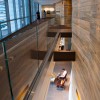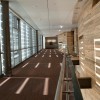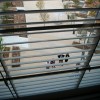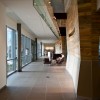One of the most important climate change reduction advances in architecture and building in America is unfolding in the foothills of the Front Range outside Denver where the National Renewable Energy Laboratory (NREL) is completing a flagship for renewability and energy efficiency. The Research Support Facilities (RSF) in Golden, Colorado, were built and furnished for $67 million, comprise 222,000 square feet of zero-energy building (ZEB), were designed by RNL Design with Stantec, and were built by Colorado’s Haselden Construction. Seeking the U.S. Green Building Council’s (USGBC) LEED Platinum status, NREL is certainly practicing what it preaches: its scientists and technologists are occupying daylit spaces this summer to deliver energy strategies as they work to battle climate change and strive for national energy independence.
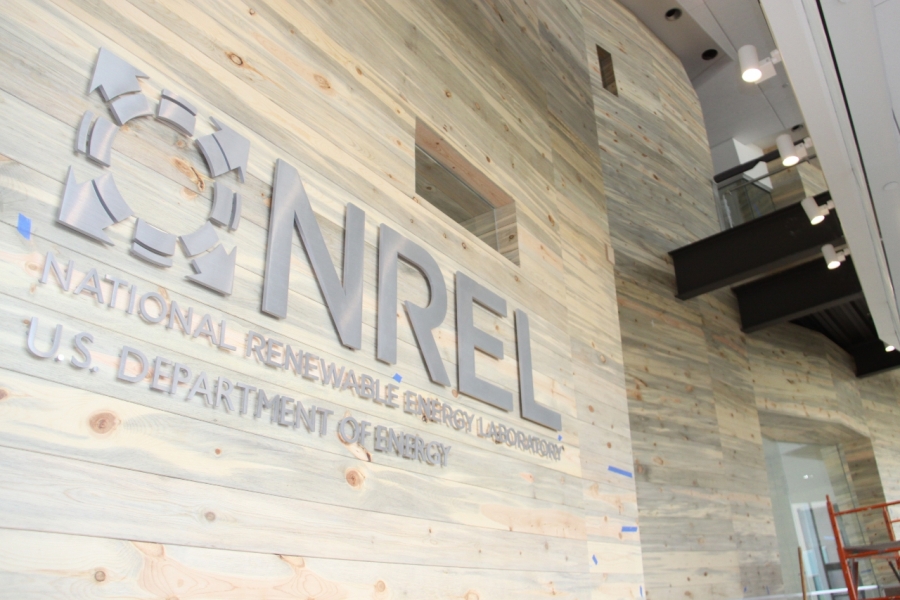 Heather Lammers, Courtesy of DOE/NREL
Heather Lammers, Courtesy of DOE/NREL
NREL's Research Support Facilities Strive for Net Zero-Energy
NREL's Research Support Facilities Strive for Net Zero-Energy
According to Tom Hootman, Director of Sustainability for RNL Design, “The building will be highly monitored – it’s basically a living lab for NREL. We are excited to see the results and to share our successes and lessons learned.” One of four national laboratories, NREL houses research scientists and their support crew, including research and development related to renewable fuels and electricity as well as integrated energy system engineering and strategic energy analysis. More particular to the nation’s building industry, NREL supports the Department of Energy (DOE) in its Building America and Net-Zero Commercial Buildings initiatives, creating tools that will help professionals do a better job of designing, building, and rebuilding more energy-efficient projects. NREL also supports DOE’s residential building research projects, including its development of zero-energy homes, which is important given that 39% of our nation’s primary energy consumption is spent on commercial and residential buildings.
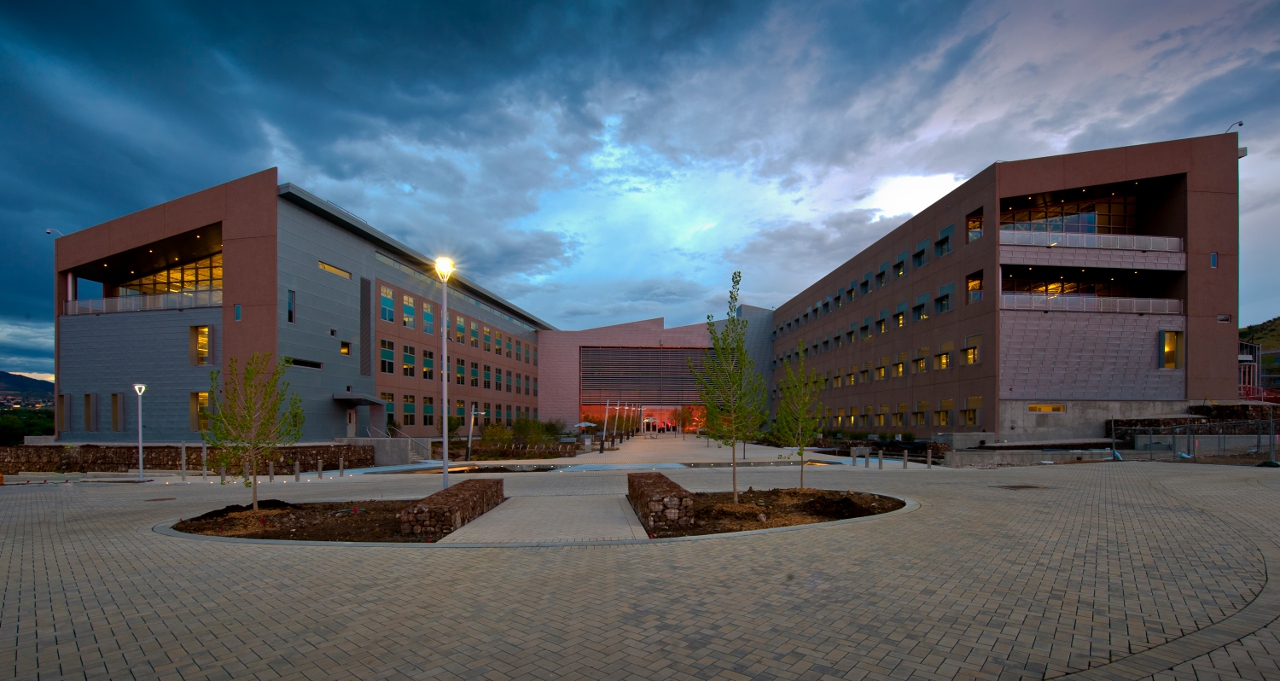
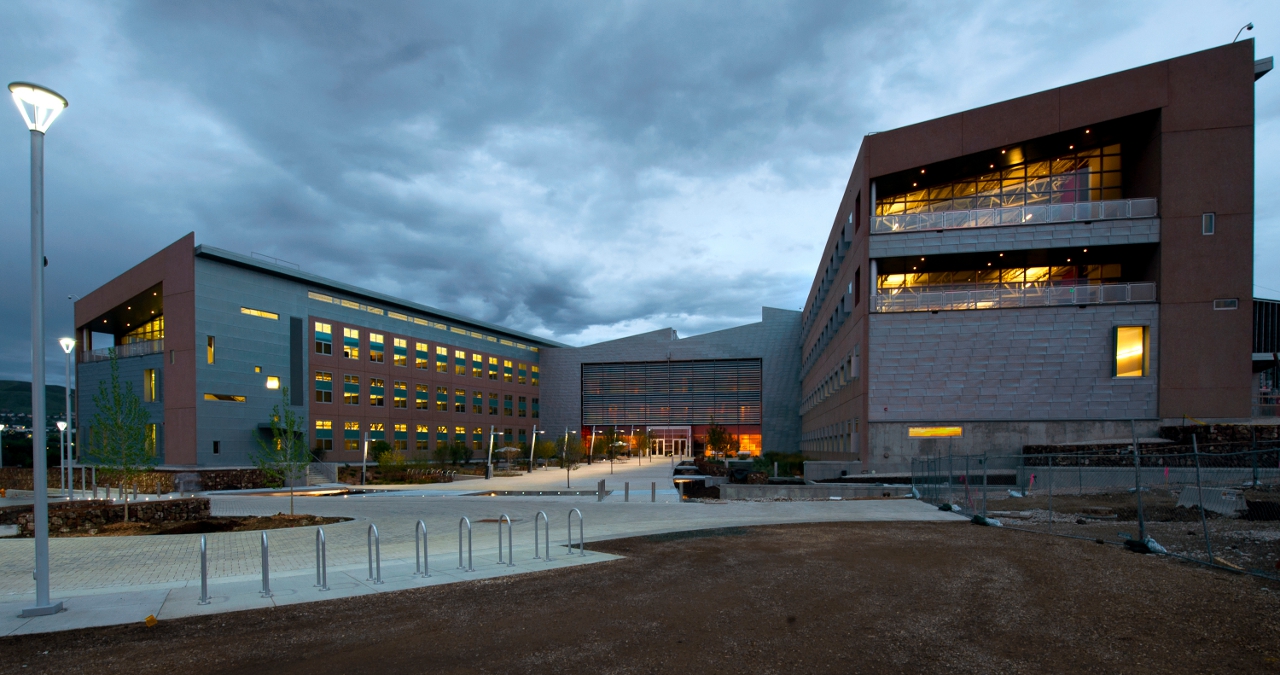
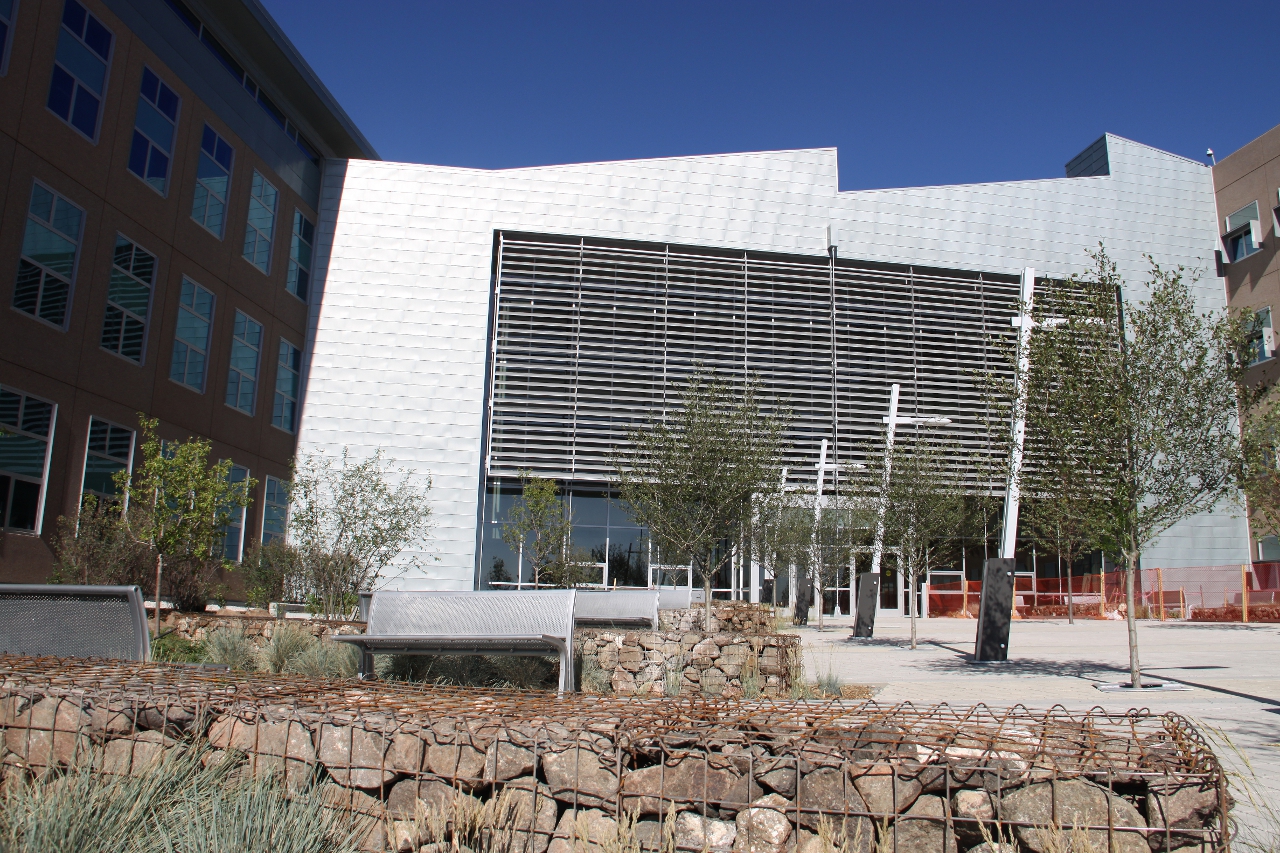
As described by Edward Mazria, founder and CEO of Architecture 2030, reducing the energy used by commercial and residential buildings is a vital concern of national and international significance. Zero Energy Buildings (ZEBs) in particular can play a huge role in meeting the challenge of reducing our carbon footprint, slowing the progression of global warming and the inevitable climate disruptions. NREL’s support of the design and construction industry is particularly important, as it provides a vital link for enterprises that are developing new technologies that need a boost to become forces in the industry. The RSF building is perhaps one of NREL’s most visible technology transfer efforts: the building’s HVAC system, energy strategies, materials, envelope, configuration, siting, and other technologies combine to teach how we might be better designers and builders, taking active steps to reduce our influence on foreign oil while providing buildings that are also better in which to work.
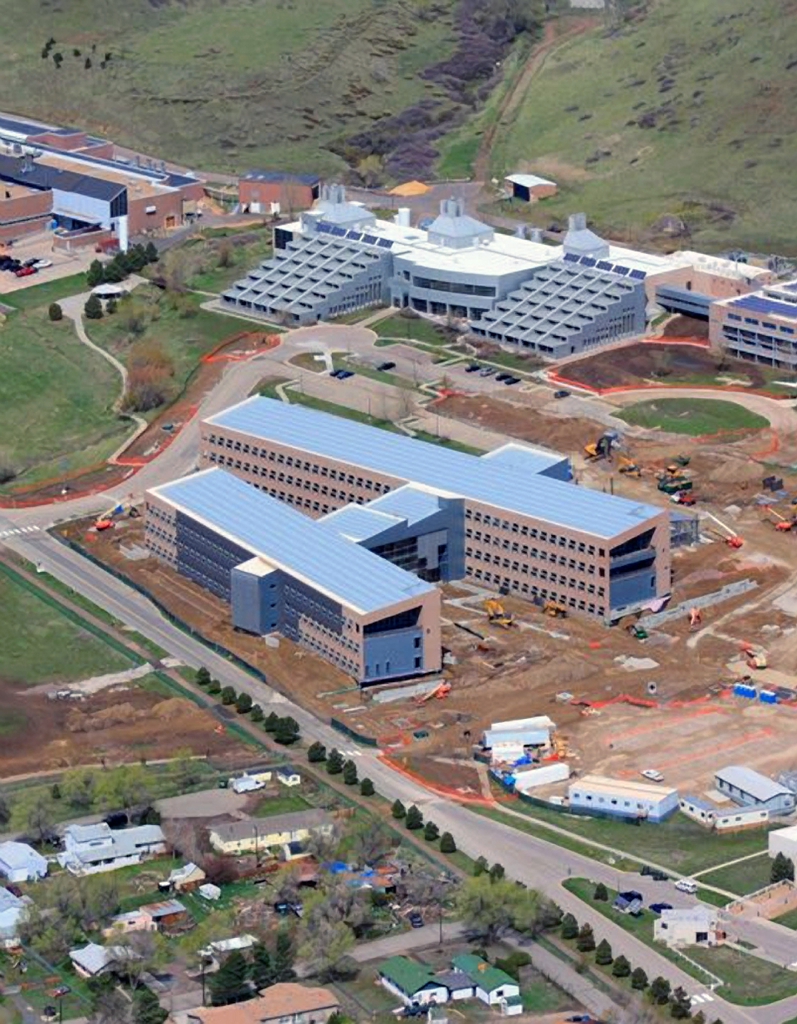 As an architect who has been striving for energy conservation in the buildings that I’ve designed over my 25-year career, I have found (and I’m sure my fellow architects who are committed to providing environmentally responsible buildings have found) that the challenge of meeting clients’ programmatic and budgetary mandates is hard enough without trying untested or challenging building systems that are outside a client’s risk-adversity profile.
As an architect who has been striving for energy conservation in the buildings that I’ve designed over my 25-year career, I have found (and I’m sure my fellow architects who are committed to providing environmentally responsible buildings have found) that the challenge of meeting clients’ programmatic and budgetary mandates is hard enough without trying untested or challenging building systems that are outside a client’s risk-adversity profile.
As our nation’s commercial real estate market emerges from a recession, it will do so under growing pressure to adopt stringent International Energy Conservation Code (IECC) requirements for both new and existing buildings. The design and construction industry must learn more about what NREL has done, including its mission to provide cost-effective solutions to a building’s energy conservation needs. This is particularly important, given that the Research Support Facilities was built at square foot prices equivalent to those found in conventional commercial office buildings. When asked about the typical cost pressures facing a design team trying to provide a ZEB, RNL Design’s Hootman says, “We are still evaluating specific cost and benefit scenarios for the building. Because the building was procured through a performance-based design--build delivery, we did not have to financially justify individual energy-saving strategies. Rather, we had to hit an aggressive energy target at a firm fixed price.”
Net Zero Energy Buildings
According to a 2006 NREL study titled “Zero Energy Buildings: A Critical Look at the Definition,” a successful ZEB can be defined in four primary ways:
- Net Zero Site Energy: A site ZEB produces at least as much energy as it uses in a year, when accounted for at the site.
- Net Zero Source Energy: A source ZEB produces at least as much energy as it uses in a year, when accounted for at the source. Source energy refers to the primary energy used to generate and deliver energy to the site. To calculate a building’s total source energy, multiply imported and exported energy by the appropriate site-to-source conversion multipliers.
- Net Zero Energy Costs: In a cost ZEB, the amount of money the utility pays the building owner for the energy the building exports to the grid is at least equal to the amount the owner pays the utility for the energy services and energy used over the year.
- Net Zero Energy Emissions: A net-zero emissions building produces at least as much emissions-free renewable energy as it uses from emissions-producing energy sources.
Daylighting
Daylighting is the RSF’s primary energy-savings strategy, an easy solution that is becoming widely adopted in both new and remodeled “smart” buildings. Using daylight design simulation and accrued experience, the design team decided that the overall footprint of the building’s office floorplates should be a maximum of 60 feet from exterior wall to exterior wall, the distance that generally allows an entire office space to be effectively daylit. The design then focused on the need to evenly distribute the sunlight throughout the space without resulting in undue glare or overly bright spaces located immediately adjacent to exterior windows. As shown in the photos, depending on a window’s orientation to the sun, shading devices were carefully placed on the exterior and interior to manage both direct and indirect sunlight, distributing it evenly to create a bright, pleasant working environment.
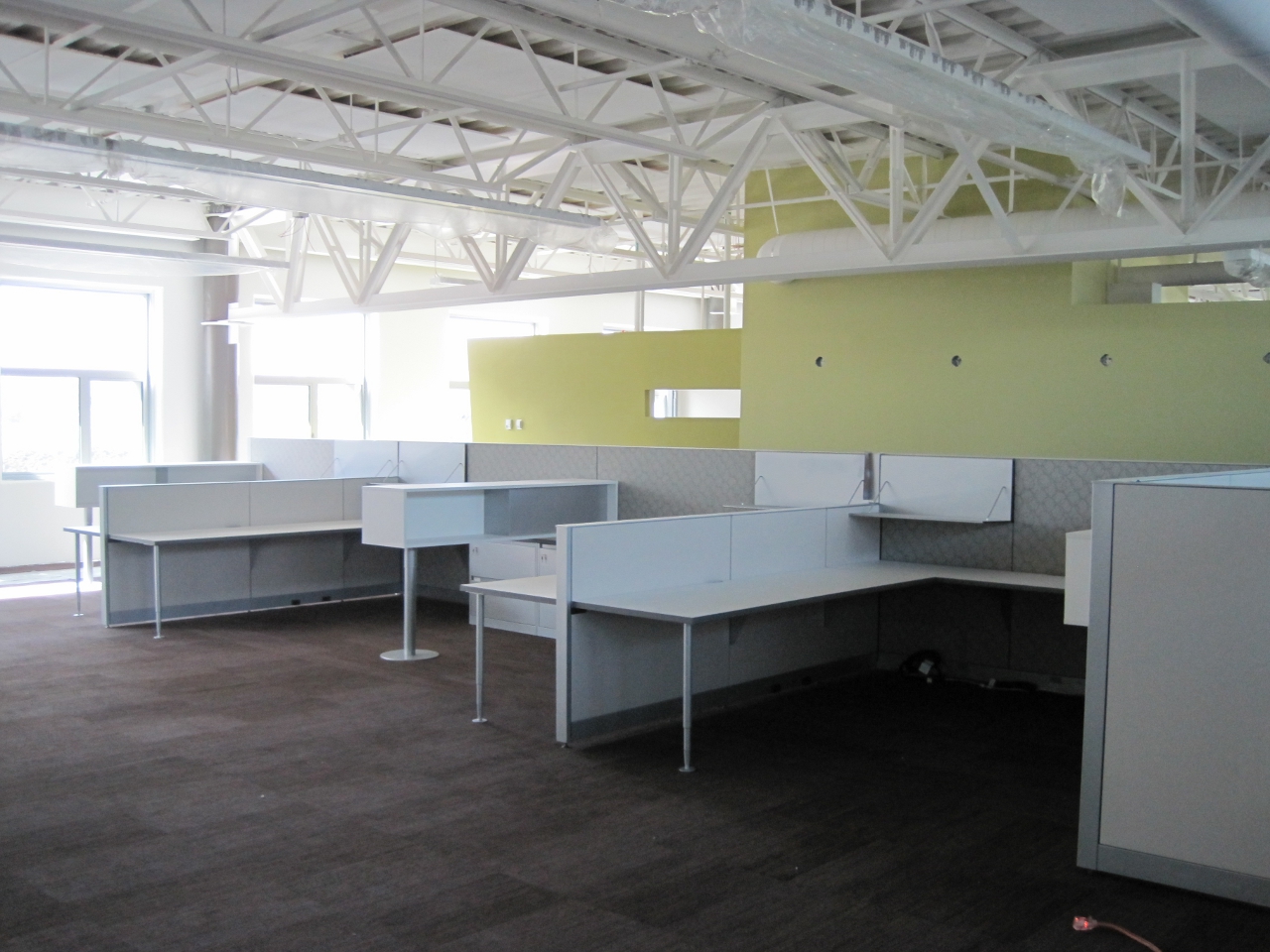
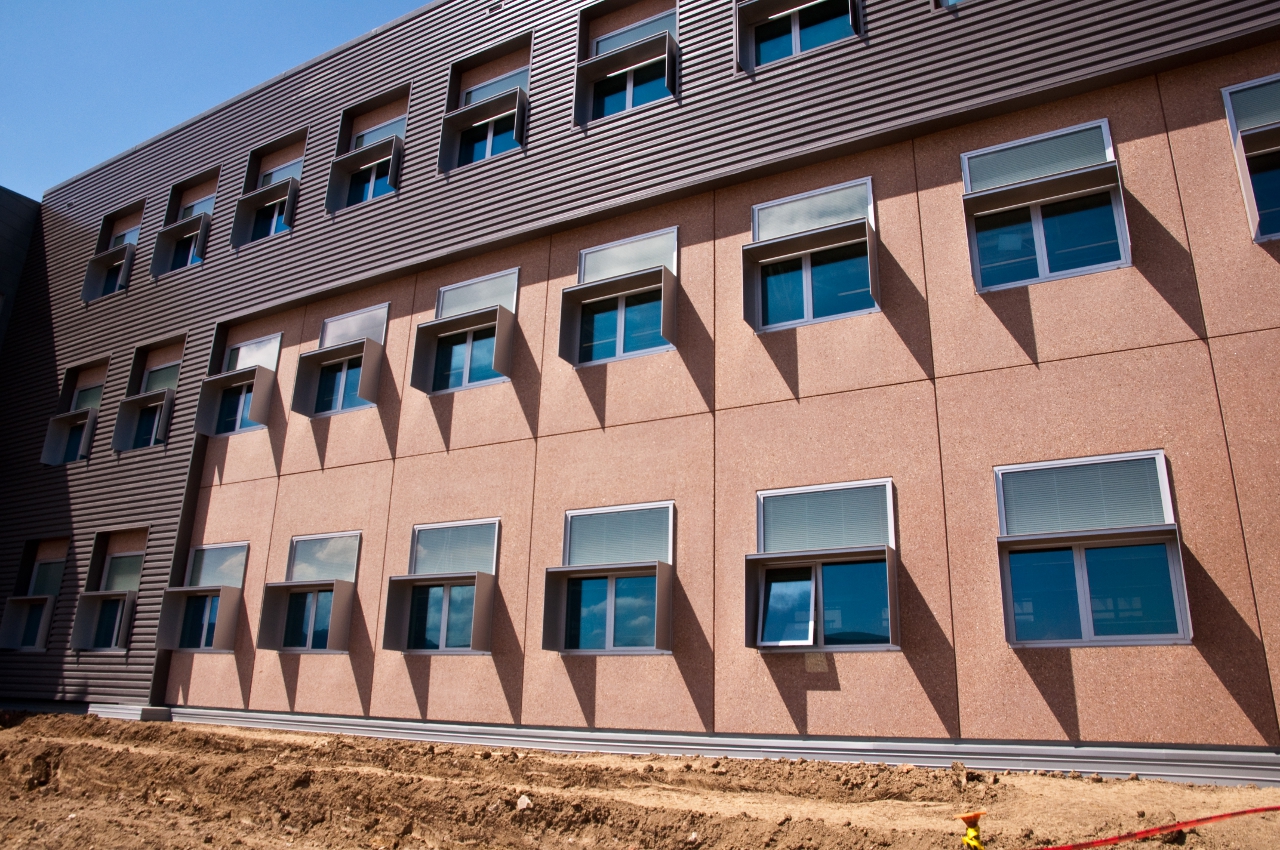
Air Handling System
Another strategy that will be carefully monitored to evaluate its effectiveness is a simple but extensive series of concrete baffles constructed in the crawl space of the building that are tied to its air handling system. Cool or warm air is passed through this labyrinth, where convection traps the energy and returns it as needed to the building’s spaces through an underfloor ventilation system. According to Hootman, “We have made the general parameters about the labyrinth available through presentations and case studies. The labyrinth is part of an integrated heat-recovery strategy that involves a heat-recovery loop. The detailed analysis around this integrated system is complex and very project-specific. It’s possible that more detail on this strategy will be made available as NREL and the design--build team develop more case studies and continue to share lessons learned with the industry.”
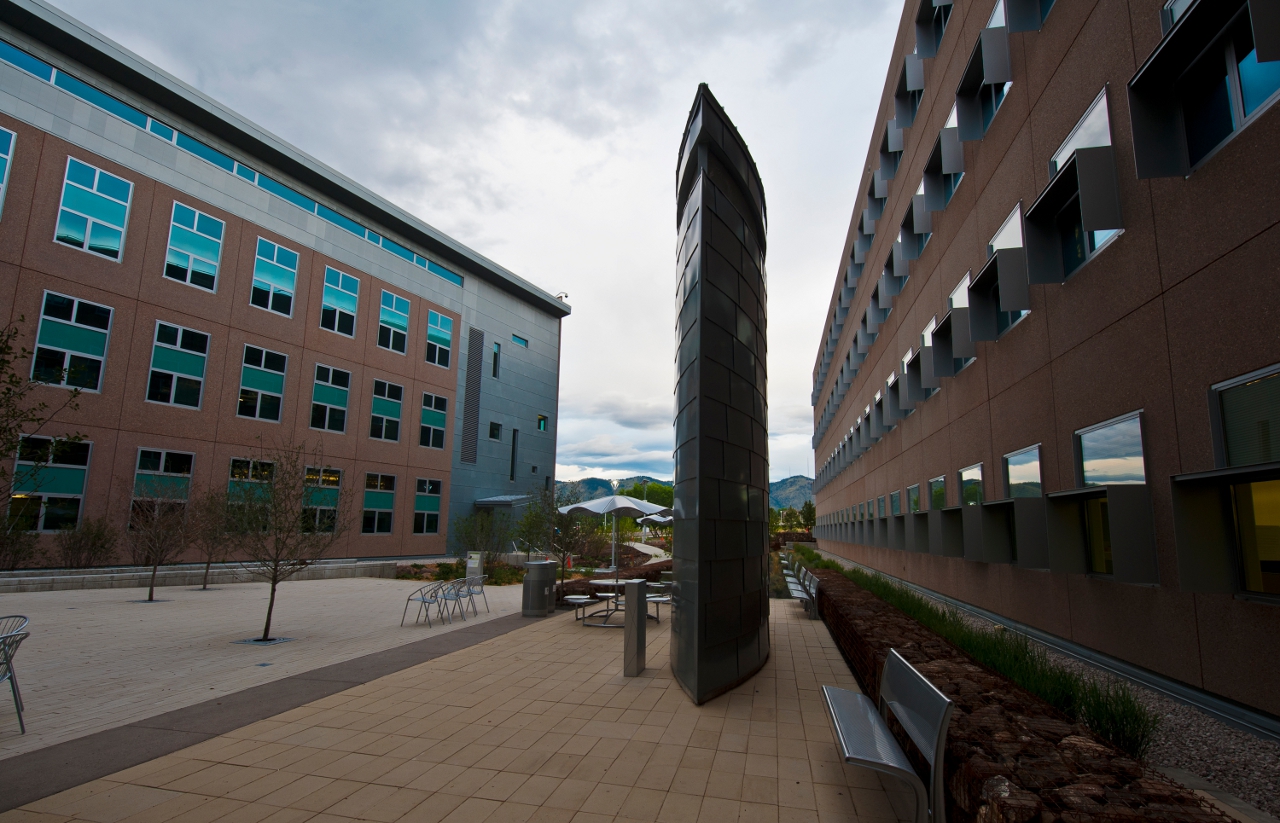
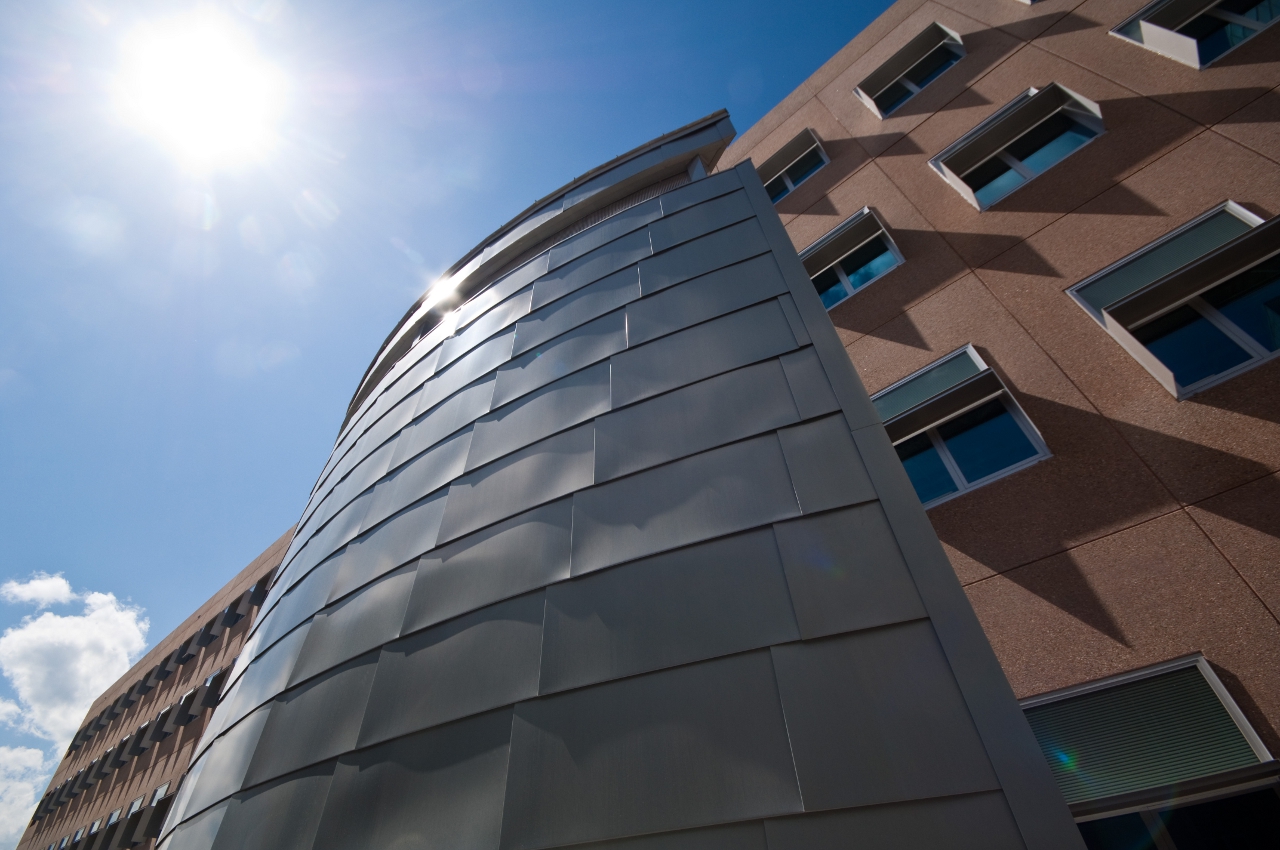
Videos
NREL Research Support Facility (RSF) Documentary
alt=""
YouTube video by NRELPR: "The ideas and innovations that define NREL are now shaping the next generation of commercial office buildings. DOE's Research Support Facility at NREL, will set a new benchmark for affordable, sustainable commercial design and construction. The unique form of the RSF is driven by energy-saving strategies, many researched and advanced at NREL."
Haselden/RNL - Research Support Facility Documentary
alt=""
YouTube video by NRELPR: "The US Department of Energy's (DOE) Research Support Facility (RSF) on the campus of the National Renewable Energy Laboratory is positioned to be one of the most energy efficient buildings in the world. It will demonstrate NREL's role in moving advanced technologies and transferring knowledge into commercial applications. Because 19 percent of the country's energy is used by commercial buildings, DOE plans to make this facility a showcase for energy efficiency. DOE hopes the design of the RSF will be replicated by the building industry and help reduce the nation's energy consumption by changing the way commercial buildings are designed and built."
DOE/ NREL Build One of the World's Most Energy Efficient Office Spaces
alt=""
YouTube video by NRELPR: "Technology -- from sophisticated computer modeling to advanced windows that actually open -- will help the newest building at the U.S. Department of Energy's (DOE) National Renewable Energy Laboratory (NREL) be one of the world's most energy efficient offices. Scheduled to open this summer, the 222,000 square-foot RSF will house more than 800 staff and an energy efficient information technology data center. Because 19 percent of the country's energy is used by commercial buildings, DOE plans to make this facility a showcase for energy efficiency. DOE hopes the design of the RSF will be replicated by the building industry and help reduce the nation's energy consumption by changing the way commercial buildings are designed and built."

Morey Bean, AIA, LEED AP
Colorado's 1999 Architect of the Year and Vice Chair of the Boulder Chapter of the Urban Land Institute, Morey’s experience includes the successful development of the Colorado Architecture Partnership, an architecture firm dedicated to sustainability and green building. Morey was appointed by the Chief Architect of the GSA to the National Register of Peer Professionals. He serves as a ULI Service Advisory Panelist and was a charter member of the Colorado Chapter of the USGBC and past president of the Colorado South Chapter of the AIA. He is a construction litigation services expert witness, land development analyst and sustainability strategies consultant.
The author was honored by the Colorado Component of the American Institute of Architects as their Architect of the Year in 1999 and is on the Roster of Neutrals for the American Arbitration Association (AAA), providing dispute settlement for the design and construction industry.
Website: www.cyberarchitects.com
